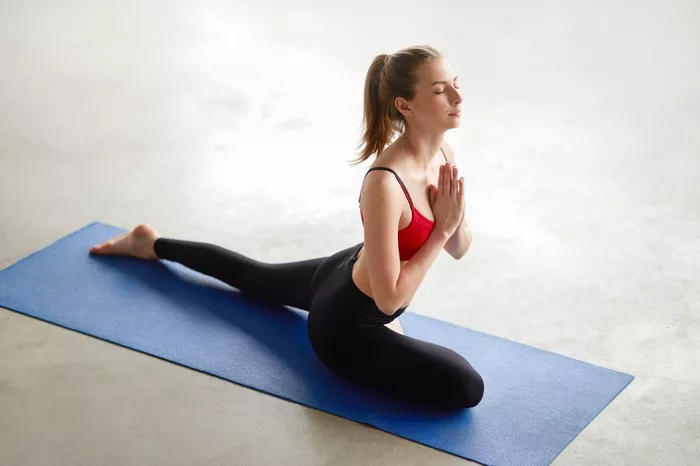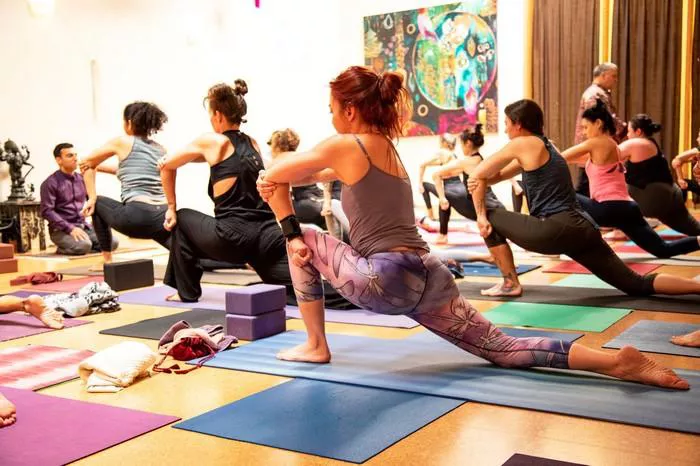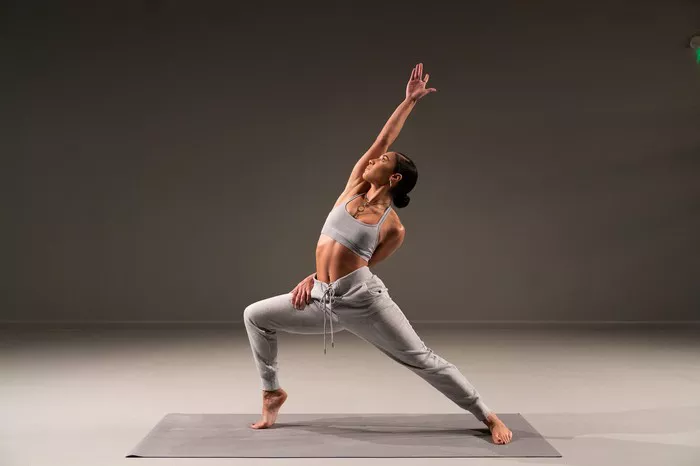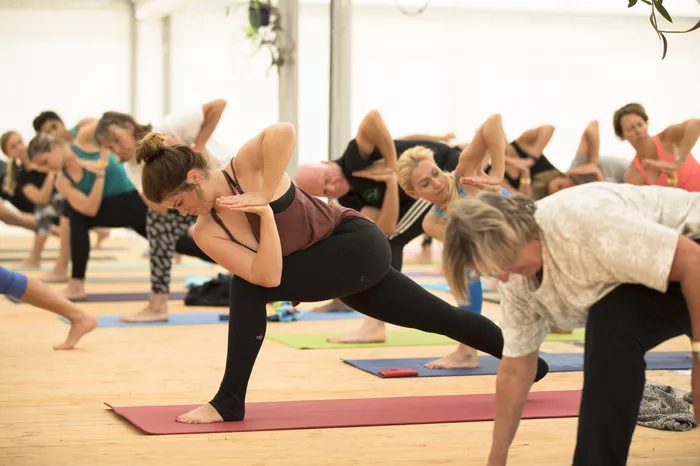Yoga, in its various forms, offers numerous benefits for the body, mind, and spirit. Among the many styles of yoga practiced today, Iyengar yoga stands out for its precision, alignment, and the use of props. Whether you are new to yoga or an experienced practitioner, understanding the intensity of Iyengar yoga is important before deciding if it suits your fitness level, lifestyle, and personal goals.
In this article, we will explore the essential elements of Iyengar yoga, its intensity, and how it compares to other yoga styles. We will also discuss who can benefit from this practice and the physical and mental effects it can have on your health.
What is Iyengar Yoga?
Iyengar yoga is a form of Hatha yoga developed by the renowned Indian yoga master, B.K.S. Iyengar. It emphasizes the alignment of the body in each asana (yoga posture) and the precision with which each movement is performed. One of the distinguishing characteristics of Iyengar yoga is its use of props, such as blocks, straps, blankets, and bolsters, to help students achieve the correct alignment and deepen their stretches.
This style of yoga is also known for its structured approach. Classes are typically taught in a methodical sequence, with a strong focus on both the physical and mental aspects of the practice. Iyengar yoga is often considered therapeutic, and it is frequently used in rehabilitation settings for those recovering from injury or dealing with chronic pain.
Understanding Intensity in Yoga
Before delving into whether Iyengar yoga is intense, it is essential to understand what “intensity” means in the context of yoga. Intensity in yoga can refer to several factors:
- Physical exertion: The level of effort required to perform the poses, hold them for an extended period, or flow from one pose to the next.
- Duration of practice: The length of the yoga session, which can range from a quick 30-minute practice to a few hours.
- Mental challenge: The level of focus, concentration, and mindfulness required during the practice.
- Depth of poses: Some yoga practices may require deeper stretching or more advanced poses, which can be physically demanding.
Intensity in yoga can vary widely, depending on the style and the instructor. What one person finds intense, another may not. In some styles, such as Ashtanga or Vinyasa, the intensity is driven by the speed and flow of the practice. In Iyengar yoga, intensity is not necessarily about speed or the number of poses, but rather the precision and holding of each posture.
Is Iyengar Yoga Intense?
The intensity of Iyengar yoga can vary depending on several factors, such as the level of the practitioner, the specific class or teacher, and the individual’s physical condition. However, there are some general characteristics of Iyengar yoga that can contribute to its intensity:
1. Focus on Alignment
One of the cornerstones of Iyengar yoga is its emphasis on alignment. This means that practitioners are required to pay close attention to the positioning of their body in each posture, ensuring that every part of the body is properly aligned. This attention to detail can make Iyengar yoga challenging, as it demands a high degree of awareness and concentration.
For example, when performing a standing pose like Warrior II (Virabhadrasana II), students are encouraged to align their feet, hips, shoulders, and torso in precise ways. This might seem simple, but holding the alignment for several breaths (or even minutes) can be physically taxing. Moreover, if the body is not properly aligned, there is the risk of strain or injury. This focused attention makes Iyengar yoga mentally intense, requiring concentration and awareness at all times.
2. Use of Props
Iyengar yoga is known for its extensive use of props, such as blocks, straps, blankets, and bolsters. While these props are designed to make poses more accessible and comfortable, they also add a layer of intensity. Props help practitioners maintain alignment, deepen stretches, and hold poses for longer periods, which can lead to greater muscle engagement and an increased challenge.
For example, a student may use a block under the hands in Downward-Facing Dog (Adho Mukha Svanasana) to bring the floor closer and align the body more effectively. Similarly, using a strap in poses like Seated Forward Bend (Paschimottanasana) can help elongate the hamstrings while maintaining proper posture. Holding a stretch with the support of a prop can make the pose more intense by requiring the muscles to sustain effort for a longer duration.
3. Holding Poses for Longer Periods
Unlike fast-paced yoga styles like Vinyasa or Ashtanga, Iyengar yoga involves holding poses for extended periods. This can range from 30 seconds to several minutes, depending on the pose and the class structure. Holding poses for longer periods increases the intensity of the practice because the muscles must remain engaged and active throughout the duration of the hold.
For instance, in a standing pose, holding the position for several minutes allows for deep muscle engagement, improving strength and flexibility. At the same time, the body is constantly adjusting to maintain the proper alignment, adding another layer of intensity. Over time, this practice builds endurance and stability in the body.
4. Precision and Attention to Detail
The intensity of Iyengar yoga also comes from the need for precision in each movement. Students are guided through detailed instructions on how to position their body correctly, ensuring that each pose is performed with accuracy. This detailed approach helps to prevent injuries and allows practitioners to experience the full benefits of each pose. However, it can also feel intense, especially for beginners or those not accustomed to this level of focus.
In addition to the physical precision, Iyengar yoga emphasizes the mental discipline needed to maintain focus and concentration. This mental intensity can be just as challenging as the physical aspect of the practice. Learning to quiet the mind and stay focused on alignment and breath can be mentally demanding, but it can also lead to greater mindfulness and mental clarity.
5. Therapeutic Benefits and Intensity for Healing
Iyengar yoga is widely recognized for its therapeutic benefits, particularly in terms of rehabilitation and injury prevention. For those dealing with chronic pain or recovering from an injury, Iyengar yoga offers a gentle yet intense way to rebuild strength, flexibility, and mobility. The use of props, combined with the emphasis on alignment, ensures that each posture is performed safely and effectively.
Although Iyengar yoga can be intense for those who are unfamiliar with the style, its slow and deliberate approach allows individuals to work at their own pace. For beginners or those with physical limitations, Iyengar yoga can provide a safe and accessible way to improve flexibility, strength, and overall health without the risk of injury.
How Does Iyengar Yoga Compare to Other Yoga Styles?
To understand the intensity of Iyengar yoga, it’s helpful to compare it to other popular yoga styles. Each style has its own approach to intensity, which may appeal to different practitioners.
Vinyasa Yoga
Vinyasa yoga is a dynamic and flowing style that emphasizes movement synchronized with breath. The intensity in Vinyasa yoga comes from the pace and fluidity of the practice. Postures are linked together in a continuous flow, which can raise the heart rate and build cardiovascular strength. In contrast, Iyengar yoga focuses on holding each pose with precision and alignment, making it less fluid and faster-paced.
Ashtanga Yoga
Ashtanga yoga is a rigorous and structured practice involving a set sequence of poses performed in a specific order. Like Vinyasa, Ashtanga is fast-paced and physically demanding. The intensity of Ashtanga comes from the fast flow and the advanced nature of the poses. In comparison, Iyengar yoga is generally slower, more focused on alignment, and does not require the same level of cardiovascular effort.
Hatha Yoga
Hatha yoga, which is often used as a blanket term for any physical yoga practice, can vary greatly in intensity. Some Hatha classes are gentle, focusing on stretching and relaxation, while others may be more physically demanding. Iyengar yoga is a more specific and structured form of Hatha yoga, emphasizing alignment and long-held poses, making it more intense than many basic Hatha practices but less intense than styles like Ashtanga or Vinyasa.
Who Should Practice Iyengar Yoga?
Iyengar yoga is suitable for a wide range of people, from beginners to advanced practitioners. Its focus on alignment, use of props, and emphasis on precision make it accessible for people with various physical conditions or limitations. It is particularly beneficial for those who:
- Are recovering from an injury or dealing with chronic pain
- Want to improve their flexibility and strength in a controlled, structured manner
- Prefer a slower-paced, more meditative practice
- Are looking for a practice that emphasizes alignment and body awareness
While Iyengar yoga can be intense, it is also highly adaptable. Whether you are new to yoga or an experienced practitioner, Iyengar yoga can offer you a challenging yet rewarding practice.
Conclusion
In summary, Iyengar yoga can indeed be intense, but the level of intensity depends on your experience, goals, and how you approach the practice. Unlike fast-paced yoga styles that emphasize fluid movement, Iyengar yoga is more focused on precision, alignment, and holding poses for longer periods. The use of props and the structured nature of the practice contribute to both its physical and mental intensity.
Ultimately, Iyengar yoga is about cultivating awareness, discipline, and patience. It may not always be physically intense in the same way as Vinyasa or Ashtanga, but it challenges the practitioner to engage deeply with each posture, building strength, flexibility, and mental clarity over time. Whether you are a beginner or an experienced practitioner, Iyengar yoga offers an accessible and transformative practice that can improve both your physical health and mental well-being.
Related Topics:

















